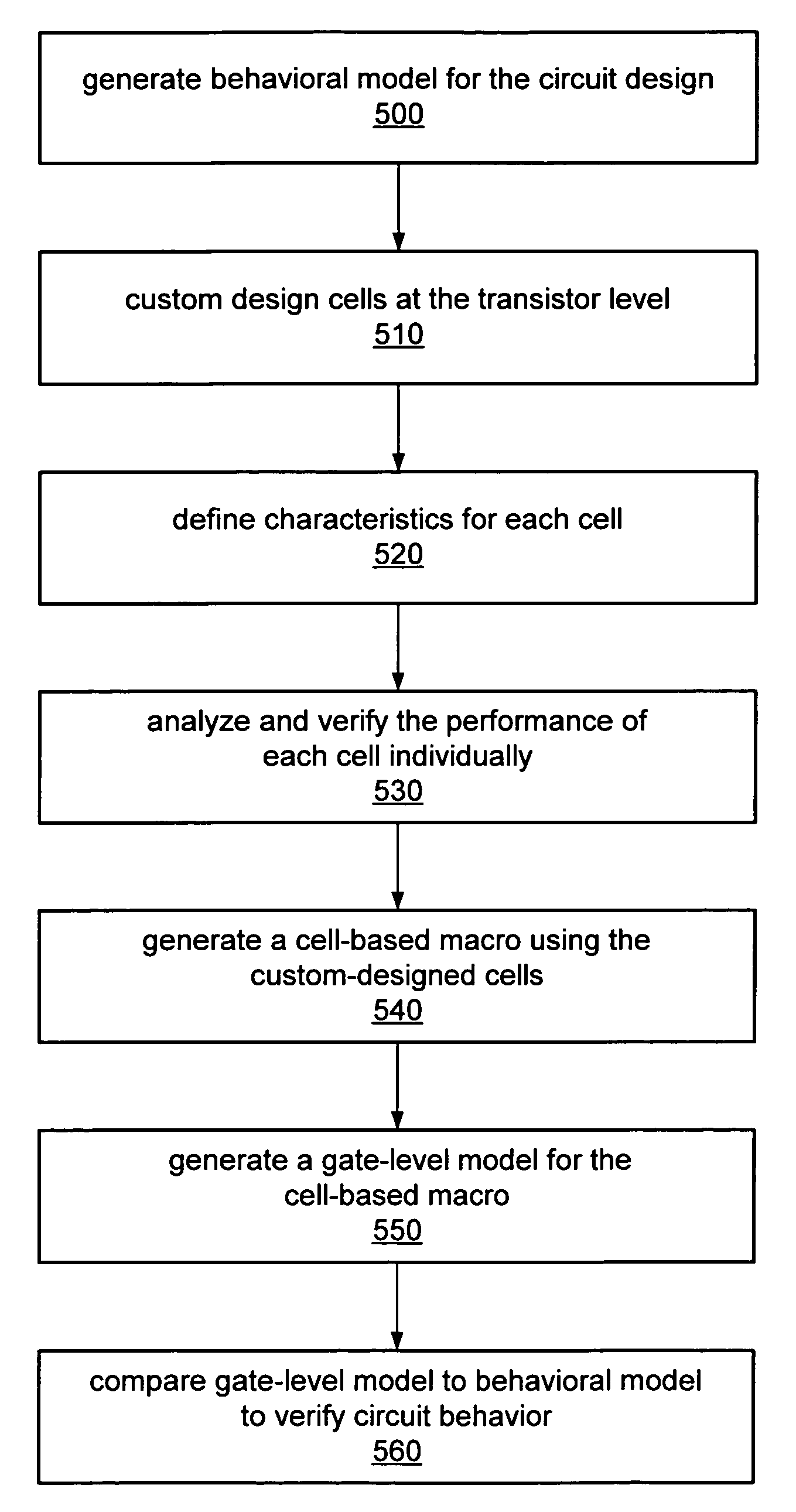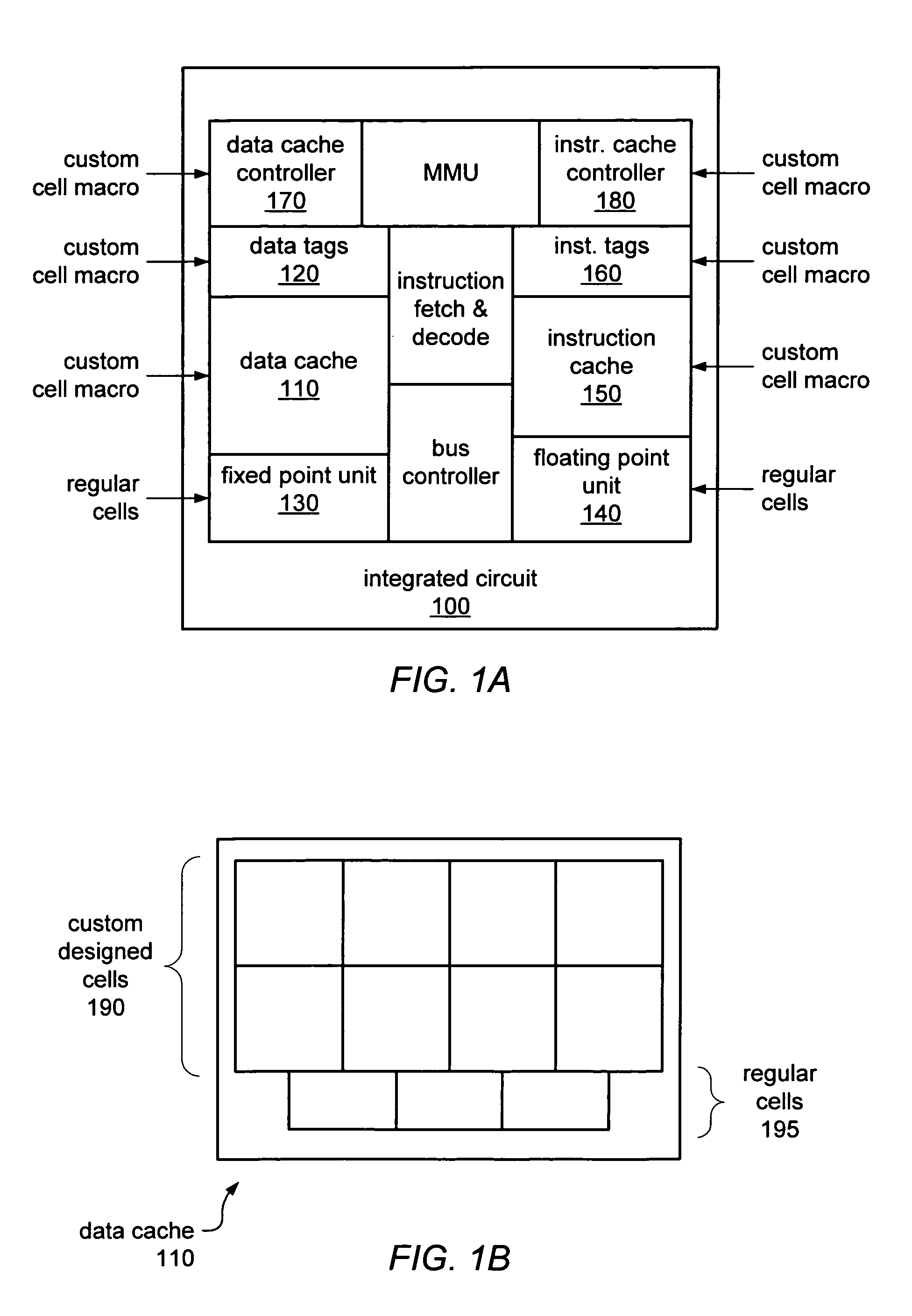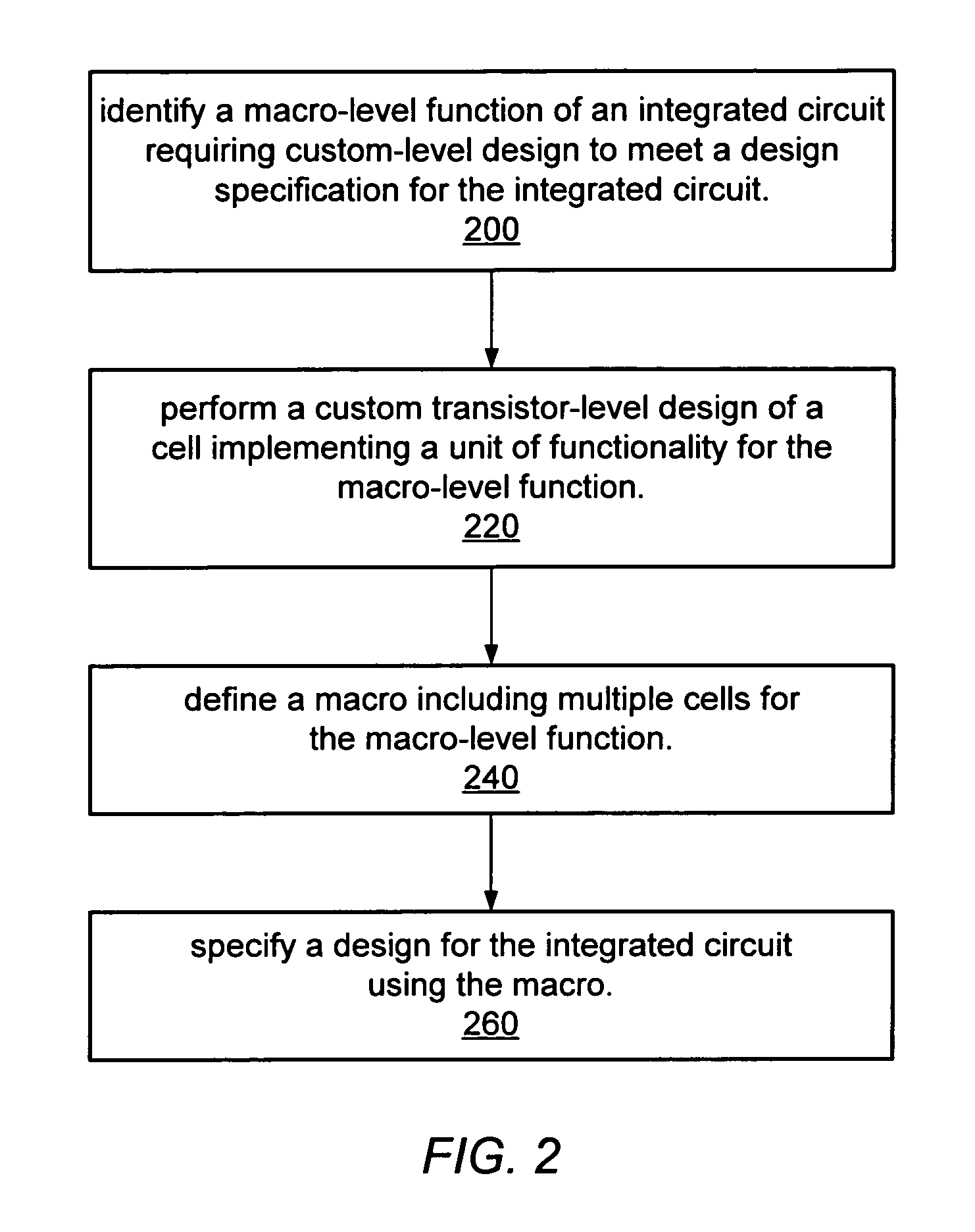Integrated circuit design with cell-based macros
a cell-based macro and integrated circuit technology, applied in the field of integrated circuit design, can solve the problems of requiring relatively large amounts of computer resources and time to perform the functions of custom transistor-level design, requiring hours of simulation time for thorough analysis, and relatively simple design including a dozen or so transistors and associated components
- Summary
- Abstract
- Description
- Claims
- Application Information
AI Technical Summary
Benefits of technology
Problems solved by technology
Method used
Image
Examples
Embodiment Construction
[0019]FIG. 1 is block diagram representing the design for an integrated circuit, according to one embodiment. Portions of the integrated circuit may be designed using an existing cell library. A cell represents a particular circuit function and includes the transistor level design for that function. Behavioral and timing models are also typically provided for each cell. By using a cell, a designer avoids having to perform the transistor level design and modeling for the particular function. However, a design for an integrated circuit, such as integrated circuit 100, may include portions that require transistor-level custom design to meet certain design requirements. For instance, the design specification for an integrated circuit, such as for integrated circuit 100, may include a design specification for a portion of the integrated circuit design that cannot be met using an existing cell library being used for other portions of the integrated circuit design. Thus, one or more portio...
PUM
 Login to View More
Login to View More Abstract
Description
Claims
Application Information
 Login to View More
Login to View More - R&D
- Intellectual Property
- Life Sciences
- Materials
- Tech Scout
- Unparalleled Data Quality
- Higher Quality Content
- 60% Fewer Hallucinations
Browse by: Latest US Patents, China's latest patents, Technical Efficacy Thesaurus, Application Domain, Technology Topic, Popular Technical Reports.
© 2025 PatSnap. All rights reserved.Legal|Privacy policy|Modern Slavery Act Transparency Statement|Sitemap|About US| Contact US: help@patsnap.com



